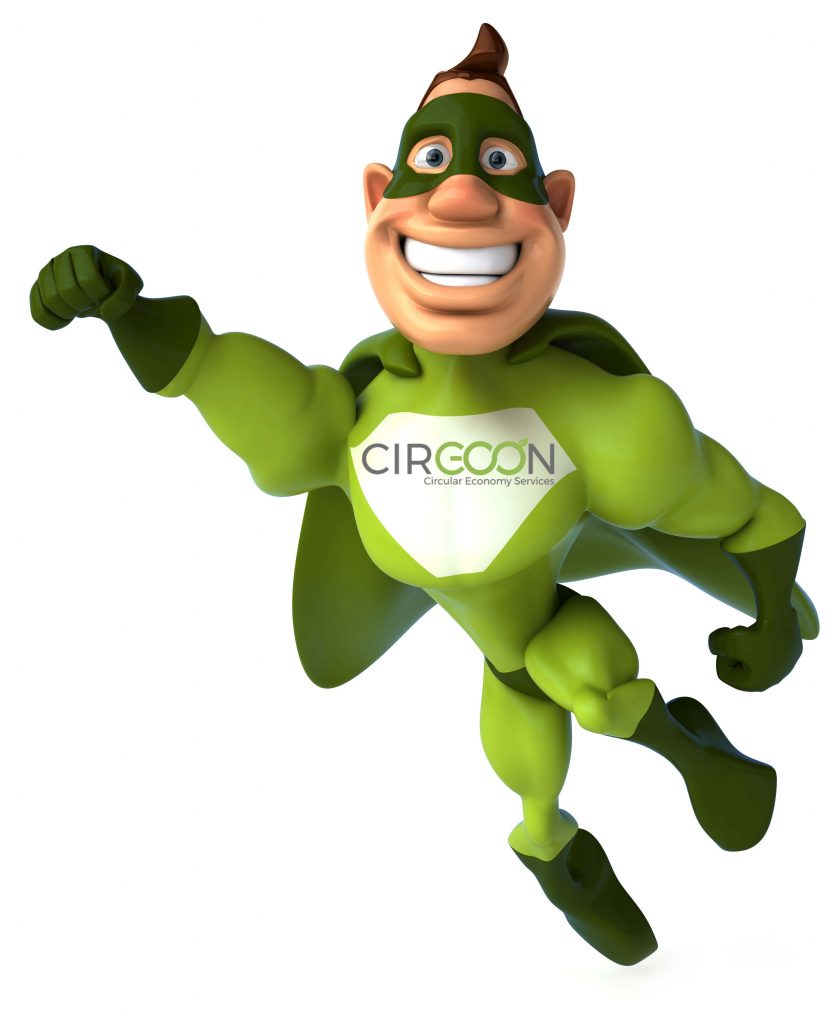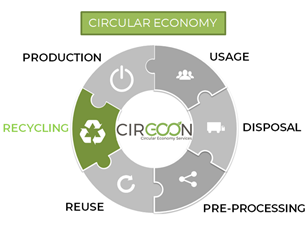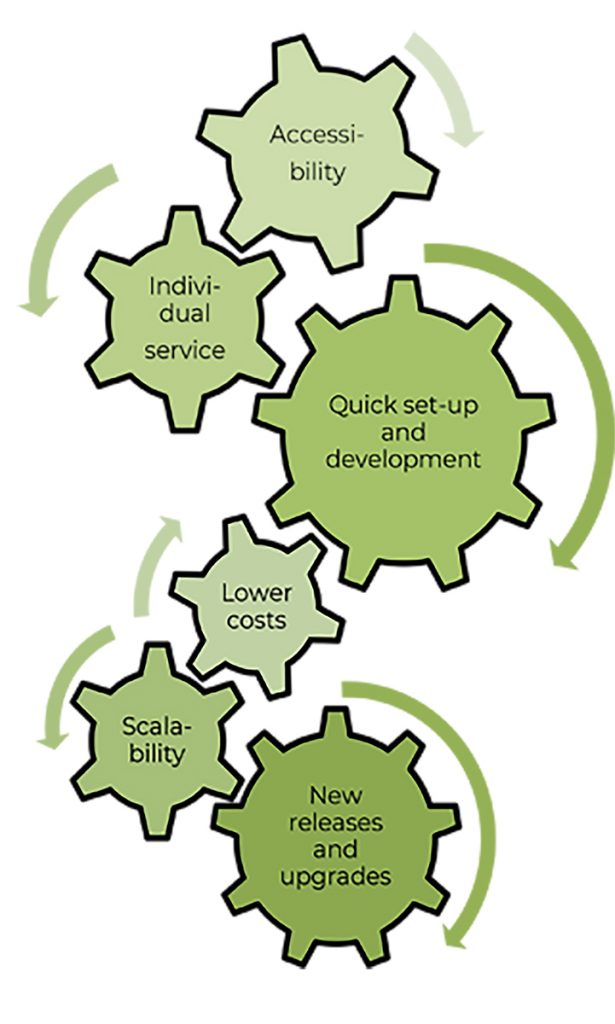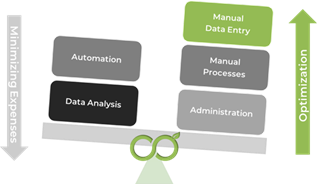Retailer starts thinking circular with focus on sustainability
Overview
Do you know how many products have been returned to retail shops or e-tailers in the last six months? Either customers didn’t like the colour or the quality did not meet their expectations or the products were damaged. Did you know that many of those goods returned are not resold and often end up in landfills which endangers our health, harms our nature and causes the loss of valuable materials?
A lot of headlines in the last few weeks concerning the topic „High return rates and the destruction of functional products“ show that finding a solution is essential from a long-term and sustainable perspective. What do we need to develop a coping strategy for the high amount of products which are usually not resold anymore? The first step is a “circular economy” way of thinking and a strong team with specialized know-how in recycling of consumer electronics.
Our Customer – Our Mission
A big player in the industry for electronics, selling all kind of devices from small household appliances up to large white goods in BeNeLux, requested CIRECON to create a concept for disposed electronic returns and generate more value out of end-of-life consumer electronics.
CIRECON was to solve the following main problems:
- Low transparency of original retailer value chain
- Missing data in concerns of collection, processing and value of end-of-life units
- No revenue for valuable products
Transparency, Confidence and Optimization
CIRECON concentrated on a concept for disposed electronics from small to large appliances in over 40 retail shops in Belgium, Netherlands and Luxembourg.
Small appliances were routed directly from the shops to the logistics hub managed by the retailer for the consolidation of all returns categorized for repair and disposal. Products for repair were shipped further to authorised repair partners and non-repairable units were handled by the CIRECON network. Non-repairable units are usually not resold in the shops or returned to customer anymore, due to hygienic aspects or damages that make a repair process not feasible from an economical perspective.
Large household appliances in their end-of-life status were picked up on consumer request in case of purchase of a new one. To solve the problem of missing data within this step, we tracked the units from consumer location up to consolidation hub by connecting the customer system with CIRIS, the recycling portal developed by us. This reduced the loss of products by 50% as we were able to control also logistics by collecting data on product, model and serial number in CIRIS.
To comply with WEEE regulations defined by the European Parliament and the local legislation, which may differ from country to country, we identified certified and licensed partners for the transport and handling of end-of-life electronics starting from the consolidation hub. In our case Dutch and German legislation had to be respected as we chose partners in the Netherlands for sorting and notification handling of transboundary shipments and in Germany for the main processing of units. Both partners comply with local regulations and hold the WEEELABEX certification required by Dutch law.
As the retailer follows the guidelines provided by manufacturers, the specification of end-of-life product handling could be clearly defined from beginning onwards. The requirement was to tap the full potential out of electronic products with the limitation that they should not re-enter the market as a whole unit. Based on this information we organized a logistics pick-up for a significant trial shipment to analyse the product split, quality and included material. Though the results showed us that there was a vast variety of appliances, brands and different values, we succeeded in defining different ways for each product: parts reuse, hazardous waste removal, disassembling into material fractions and scrap of material for recovery.
The main criteria for the definition of processes were quality, market demand and materials:
Quality: The quality of received products is good, as returns are mostly individually packed and protected from transport damages. This is one essential aspect to reuse important parts of the products and to redirect them into various processing procedures.
Demand on the market: One of the main challenges lies in the fact that for every unit defined for spare part reuse we need to figure out how to reverse-engineer it in the most cost-effective way and to source reliable buyers.
Material: Non-reusable parts were successfully routed to our partner, expert in the recovery of secondary raw materials, to gain valuable materials, like copper, gold, silver, palladium and others out of scrapped parts.
Starting Operations
Before starting into the operational phase a clear governance model was fixed in the contract by the CIRECON team including the responsibility of each party and the specified processes in the value chain. After signing the contract, the boxes, specialized for the collection of disposed electronics, were sent to the retail consolidation hub and the retailer was registered in our recycling portal CIRIS with preferred account rights and settings.
Each time when the boxes are full, the employees of the retail hub in the Netherlands can announce a pick-up with preferred date in CIRIS. The feedback from logistics will be transferred in real-time to the customer and fixed in the calendar. The whole team has an overview of announced shipments, pick-up dates and different statuses to keep tracking all data. As soon as the shipment is processed by our partners in the sorting facility, the reports based on WEEE,customer product categories and brand are available in the dashboard section, providing at the same time information on process and pricing.
Monitoring of this data leads to optimization potential and the routing of products into processes with highest cost efficiency. At any time the retailer has the possibility to export data out of the system to use it as an auditing tool for the management sector or to provide the required reporting to local government to comply with legislation. In summary, the benefits for the retailer were the reduction of loss rate of collected units by 50% due to the consolidation and tracking of units in one place, the creation of 100% additional revenue as payment for the products and a rise of data availability by 80%. Those data demonstrate the recycling process flow and improve the retailer’s green image, contributing to more customer loyalty and generating incentives to visit the retail shops.
In summary, the benefits for the retailer are:
- Reduction of loss rate of collected units by 50% due to the consolidation and tracking of units in one place.
- Creation of 100% additional revenue as payment for the products.
- Rise of data availability by 80%; such data demonstrate the recycling process flow and improve the retailer’s green image, contributing to more customer loyalty and generating incentives to visit the retail shops.












